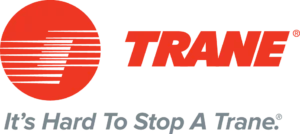Ductwork in Need of Repair Can Shorten the Life of Your HVAC System by Making It Work Harder.
The ductwork in your Buffalo, NY home is what transfers hot and cold air throughout. Leaking or damaged ductwork can keep air from being properly distributed throughout your home, while also causing higher energy bills. Your ductwork is likely not something you often think about because it is hidden between walls, under floors, and in ceilings; however, it can make all the difference to your HVAC system. Is your ductwork in need of repair?
What Is Your Ductwork and Why Is It Important?
Buffalo, NY homes with forced air HVAC systems, use ducts to circulate conditioned air throughout the house. If there are leaks, holes, or poorly connected ductwork, about 20 to 30 percent of the air that moves through the duct system may be lost. Ductwork that is in need of repair may result in higher energy bills and keep your home from maintaining its ideal comfort level.
Ductwork in need of repair can shorten the life of your HVAC system by making it work harder.
Is Your Ductwork in Need of Repair?
You should be aware of the age of your ducts, as ductwork is built to last around 15 years with no issues. If your ductwork is older than that, it is recommended to have a professional HVAC expert inspect your ducts to ensure there are no issues.
Here are some things to watch for to help you identify if your ductwork is in need of repair:
– Visible Damage: The simplest way to identify that your ductwork is in need of repair or replacement is finding damage that is noticeable. Kinks, holes, gaps, low hanging sections, etc. are obvious indications that your ducts are not functioning as they should and are in need of repair.
– Loud Noises: Rattling, vibrating, or whistling sounds coming from your HVAC system usually mean that your ductwork has something loose, a hole, or disconnected joints, amongst other things. If your HVAC system is making new loud noises when running, there could be an issue with your ductwork.
– Increased Energy Bills: If your energy costs go up unexpectedly, you could be losing energy through leaks and holes in your ductwork. A furnace and air conditioning professional can test your system to identify any problems. If there are escapes and they are small enough, you may be able to have your ductwork sealed; however, for larger issues, it may be best to have your ductwork replaced.
– Poor Indoor Air Quality: The EPA has identified poor indoor air quality as both a short- and long-term health risk to American homeowners. Flaws in your ductwork let pollen, bacteria, mold, dust, and other unwanted particles into your HVAC system and to circulate throughout your Buffalo home. A poor indoor air quality test, increased illness with your family, and/or an abundance of dust throughout your home, can mean that there are issues within your ducts.
– Uneven Temperature Flow: If you notice that some areas of your home are hotter or colder than others, that is usually a sign that your ductwork is in need of repair. Faulty ductwork can cause uneven temperatures throughout your house, because your ducts are not sending enough air to certain parts of your home.
How Can You Maintain Your Ductwork?
Having your ducts recurrently cleaned and tested can help improve air quality in your home. If your ducts have leaks, having them fixed will make your system more efficient and allow it to more effectively circulate air in your home. Ducts can become the breeding ground for dust mites, rodents, and insects and should be cleaned at least once a year.
Having regular furnace and AC tune-ups can help you to avoid having issues with your ductwork. Testing your HVAC system’s ducts for leaks will help you stay on top of any repairs you may need.
At Reimer Home Services, our professional tune-up and inspection can help prevent breakdowns, lower your energy bills, and even add years to your system’s lifespan.
To schedule your HVAC System maintenance here in Buffalo and Western New York, call us or request service online. We’ll set a date with you for your tune-up.
Also, our rhino is nameless! We need your help naming our Rhino!





